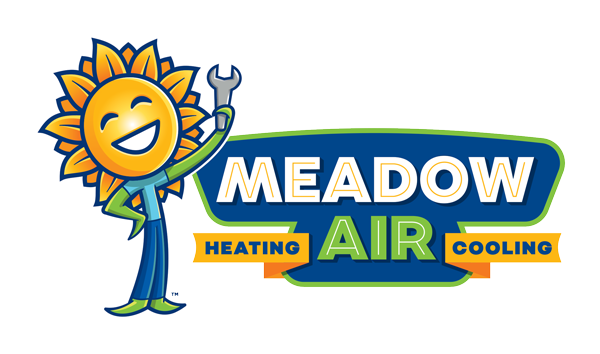Heating Tips to Keep Your Home Warm
As temperatures drop, keeping your home warm and comfortable becomes a top priority. While Arizona winters may be mild compared to other parts of the country, chilly nights can still make a reliable heating system essential. However, staying warm doesn’t have to mean higher energy bills. Improving energy efficiency reduces heating costs, enhances comfort, and extends HVAC lifespan.
In this guide, we’ll explore practical home warming tips to help you stay cozy while saving money. From simple, low-cost solutions like sealing air leaks and adjusting your thermostat to long-term investments such as upgrading insulation or installing zoned heating, these strategies will improve your home’s efficiency year-round. Plus, many of these tips also contribute to lower cooling costs in the summer, making them valuable all year long.
Key Takeaways
- Seal Heat Leaks: Insulating walls, windows, and doors reduces heat loss and boosts efficiency.
- Smart Heating: Use programmable thermostats and zone heating to cut energy costs.
- Simple Fixes: Rugs, ceiling fan adjustments, and curtains enhance warmth affordably.
- Regular Maintenance: Clean filters, inspect vents, and schedule HVAC checkups.
- Regional Strategies: Tailor heating methods based on your climate for optimal efficiency.
- Heating Myths: Turning up the thermostat doesn’t heat faster; closing vents can harm airflow.
- Safety First: Use space heaters properly, check chimneys, and monitor carbon monoxide detectors.
- Stay Cozy Efficiently: Dress in layers, use heated blankets, and cook at home for extra warmth.
Understanding Heat Loss in Homes
Before diving into ways to improve your home’s warmth, it’s important to understand how heat escapes in the first place. Even with a well-functioning heating system, poor insulation and air leaks can lead to significant heat loss, forcing your heater to work harder and increasing your energy bills. By identifying and addressing these issues, you can maintain a comfortable indoor temperature while using less energy.
Common Areas of Heat Loss
Heat can escape from various areas in your home, especially through poorly insulated surfaces and small structural gaps. Windows and doors are common culprits, as cracks around frames allow warm air to seep out and cold air to enter. Attics and ceilings also contribute to heat loss since warm air naturally rises and escapes through the roof if insulation is inadequate.
Walls and floors can be another source of heat loss, particularly in uninsulated walls or crawl spaces, making certain rooms feel colder. Fireplaces and chimneys can also let out significant warmth if the damper is left open when not in use. Additionally, electrical outlets and vents often have small gaps around them, allowing heat to escape unnoticed. Addressing these areas can significantly improve your home’s energy efficiency and warmth.
Identifying Drafts and Leaks
Finding and sealing air leaks is one of the most cost-effective ways to improve your home’s heating efficiency. On a cold day, try placing your hand near windows, doors, and electrical outlets—if you feel a slight breeze, there’s likely an air leak. Another simple method is the candle or incense test—hold a lit candle or incense stick near potential draft sources; if the flame flickers or the smoke moves erratically, you’ve found a leak.
For a quick check, use the paper test by closing a door or window on a thin piece of paper—if it slides out easily, air is escaping. For a more advanced approach, thermal cameras can highlight temperature differences, showing exactly where heat is being lost. Many HVAC professionals offer this service as part of an energy audit.
By sealing these leaks with weatherstripping, caulk, or additional insulation, you can reduce heat loss, keep your home warmer, and lower your energy costs.
Low-Cost and DIY Heating Tips
Seal Drafts and Insulate
Preventing cold air from seeping in is key to maintaining a warm home. Use weatherstripping, caulk, or draft stoppers around doors and windows to seal gaps and reduce heat loss. Proper insulation helps retain warmth, making your heating system work more efficiently.
Utilize Curtains and Blinds
Maximize natural warmth by opening south- and west-facing curtains during the day to let in sunlight. At night, close them to create an insulating barrier that keeps heat from escaping. Thick or thermal curtains can further improve heat retention.
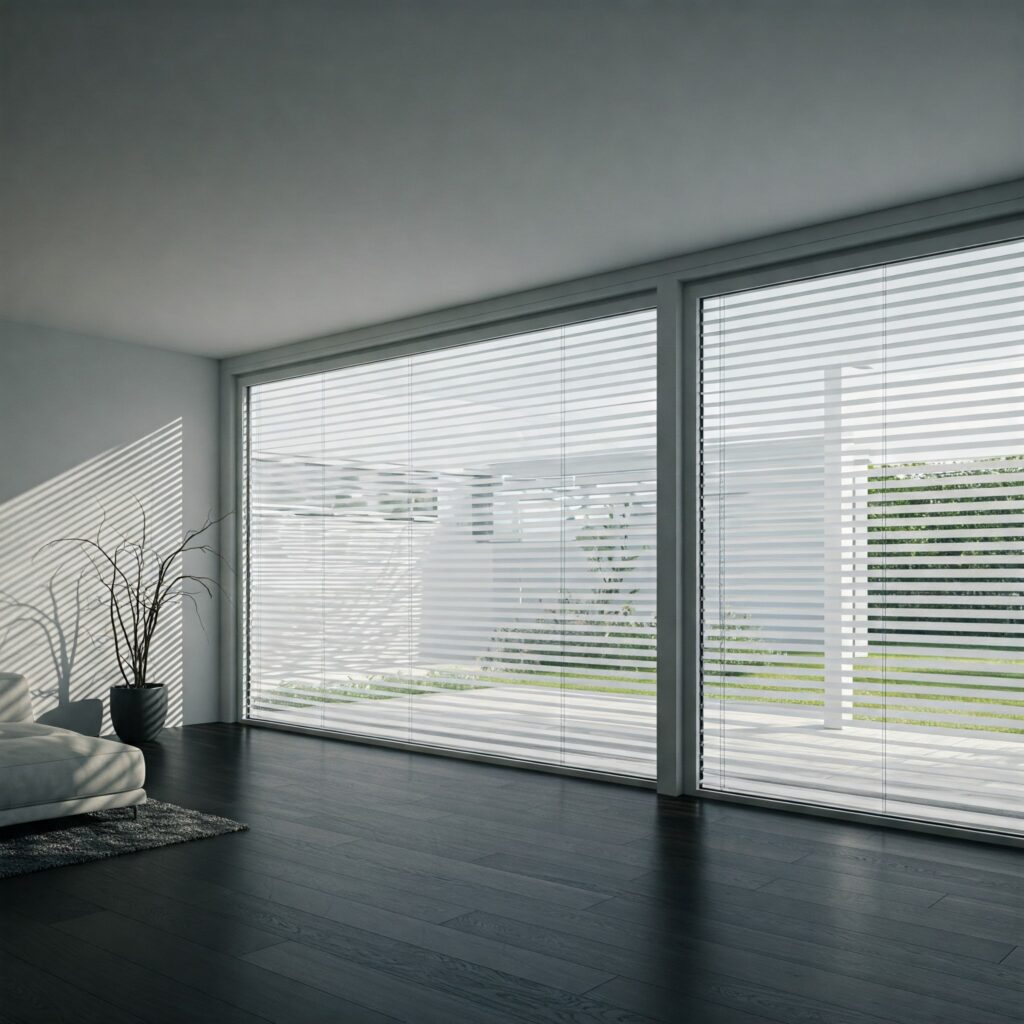
Use Rugs and Carpets
Bare floors can contribute to heat loss, especially if they are uninsulated. Placing rugs or carpets over hard surfaces adds an extra layer of insulation, helping to keep rooms warmer and more comfortable.
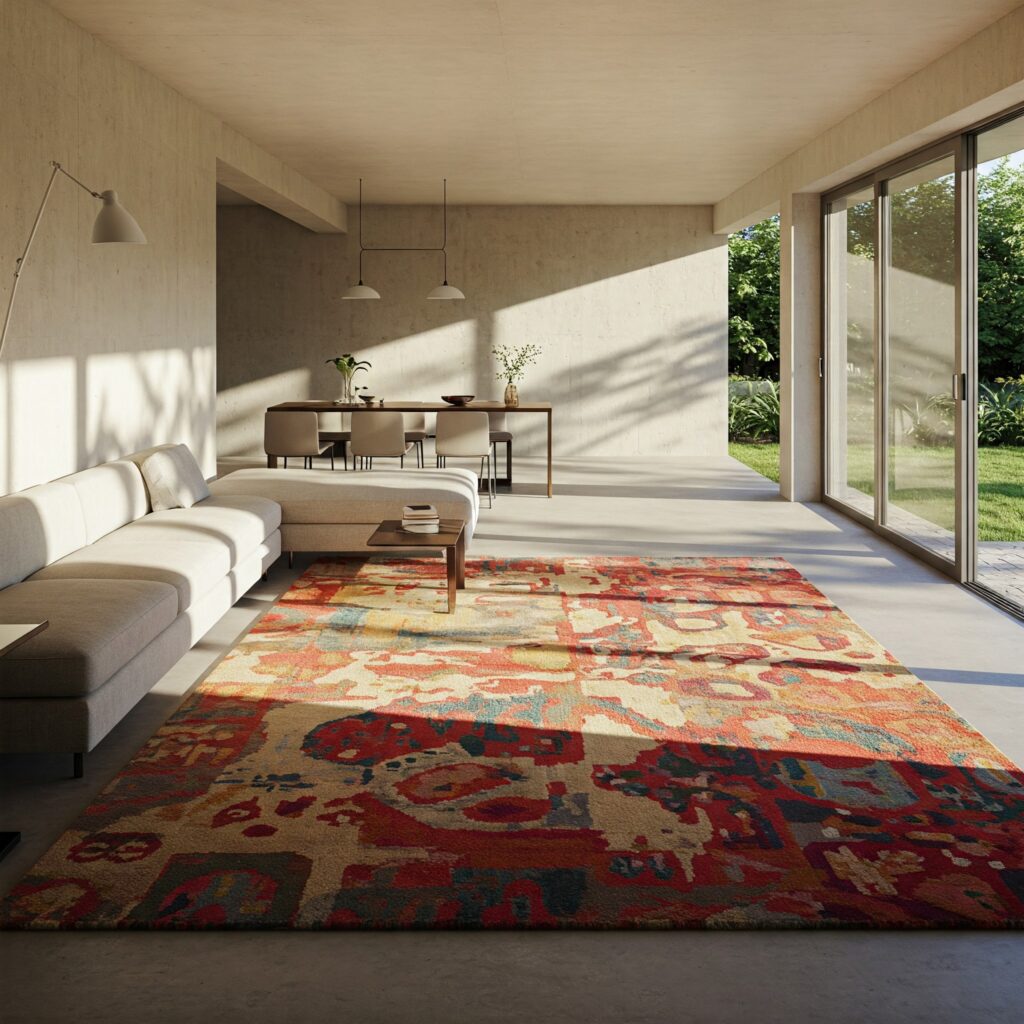
Reverse Ceiling Fan Direction
Warm air naturally rises, but running ceiling fans clockwise at low speed pushes warm air downward, improving heat distribution.
This simple adjustment can make a noticeable difference in keeping your home cozy without increasing heating costs.
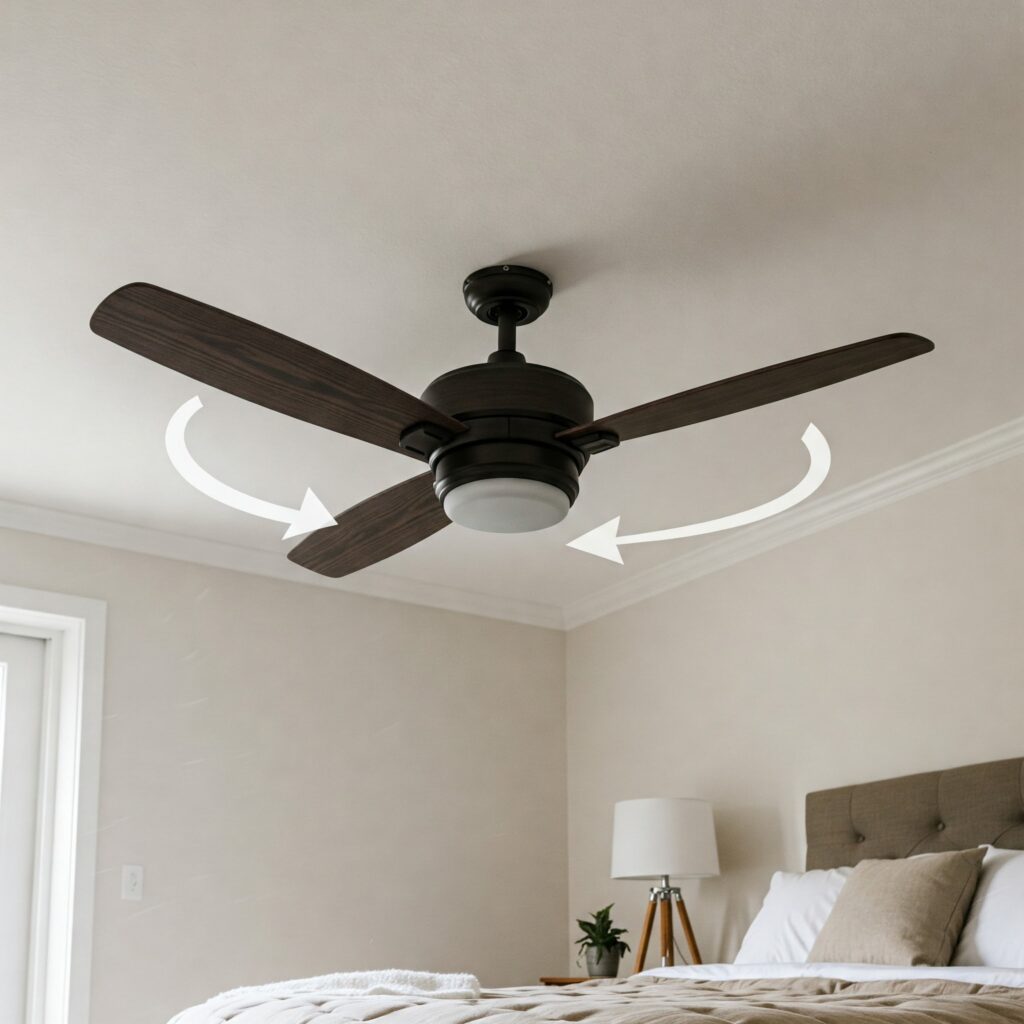
Programmable and Smart Thermostats
Investing in programmable or smart thermostats can save up to 10-15% on your heating costs annually.
These thermostats adjust temperatures automatically based on your daily routine—lowering temperatures when you’re sleeping or away and warming your home before you return.
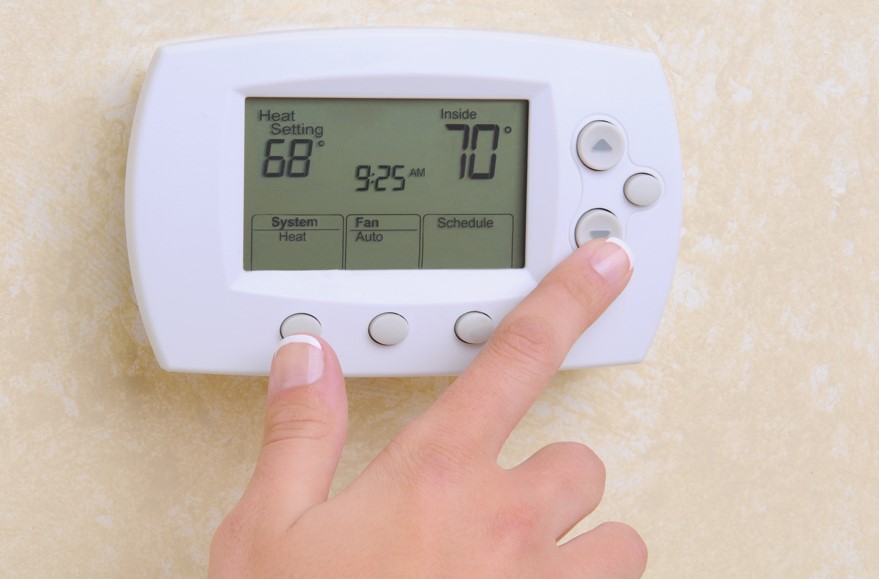
Zone Heating
Zone heating involves warming only the rooms you’re actively using, rather than heating your entire home uniformly.
Utilizing ductless mini-splits or portable electric heaters allows targeted heating, significantly cutting energy waste and lowering utility bills.
Monthly Heating Maintenance Checklist
Regular maintenance is crucial for efficient heating:
✔️ Change or clean air filters every 1-3 months.
✔️ Inspect vents, ducts, thermostat, and home exterior regularly.
✔️ Ensure chimneys and vents are clear, and monitor for unusual sounds or odors.
Spotting Heating Inefficiencies
Watch for uneven heating, unexpectedly high energy bills, frequent cycling, drafts, or poor air quality.
Early detection can help prevent costly repairs and improve overall efficiency.
Benefits of Professional Inspections
Professional HVAC inspections detect potential issues early, ensuring efficient operation, extending system lifespan, and maintaining good indoor air quality.
Professionals offer tailored recommendations to enhance your home’s comfort and efficiency.
⚠️ When to Call an Expert
If you experience unusual noises, persistent discomfort, or sudden energy cost increases, professional assistance can help identify and solve underlying problems effectively.
Regional Recommendations for Different Climate Zones
| Climate Type | Recommendations |
|
Mild Climates (e.g., Southwest, California) |
|
|
Cold Climates (e.g., Northeast, Midwest) |
|
|
Humid Climates (e.g., Southeast) |
|
Additional Tips for Staying Warm
Dress in Layers Indoors
Wear thermal clothing, sweaters, and thick socks to retain body heat. Layered blankets can also help keep you comfortable without overworking your heating system.
Use Hot Water Bottles or Electric Blankets
Hot water bottles and electric blankets offer targeted warmth, allowing you to lower the thermostat at night.
Cook at Home
Cooking meals naturally heats your home. Baking and simmering foods add warmth and humidity, enhancing indoor comfort.
Common Heating Myths Debunked
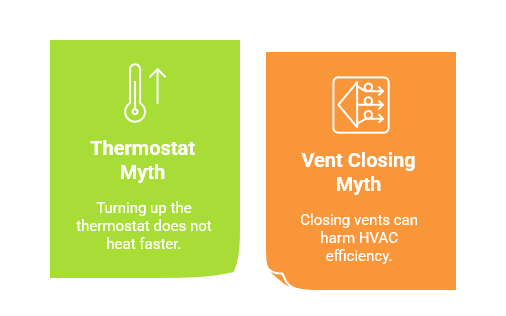
Myth: Turning Up the Thermostat Heats the Home Faster
Truth: Raising your thermostat to a higher setting won’t heat your home faster. Most heating systems operate at a fixed rate, so this only makes the system run longer, increasing energy costs.
Myth: Closing Vents in Unused Rooms Saves Energy
Truth: Closing vents in unused rooms can harm your HVAC system and decrease its efficiency. Modern systems rely on balanced airflow, so closing vents can increase pressure, cause leaks, and raise energy usage. Instead, consider using zone heating.
⚠️ Safety Precautions
- Always place space heaters on flat surfaces away from flammables.
- Regularly inspect chimneys and fireplaces for safety.
- Check carbon monoxide detectors regularly.
- Avoid using ovens for heat.
Conclusion
Keeping your home warm during colder months doesn’t have to come with skyrocketing energy bills. By following these practical tips tailored to your region, you can maximize comfort and efficiency year-round.
